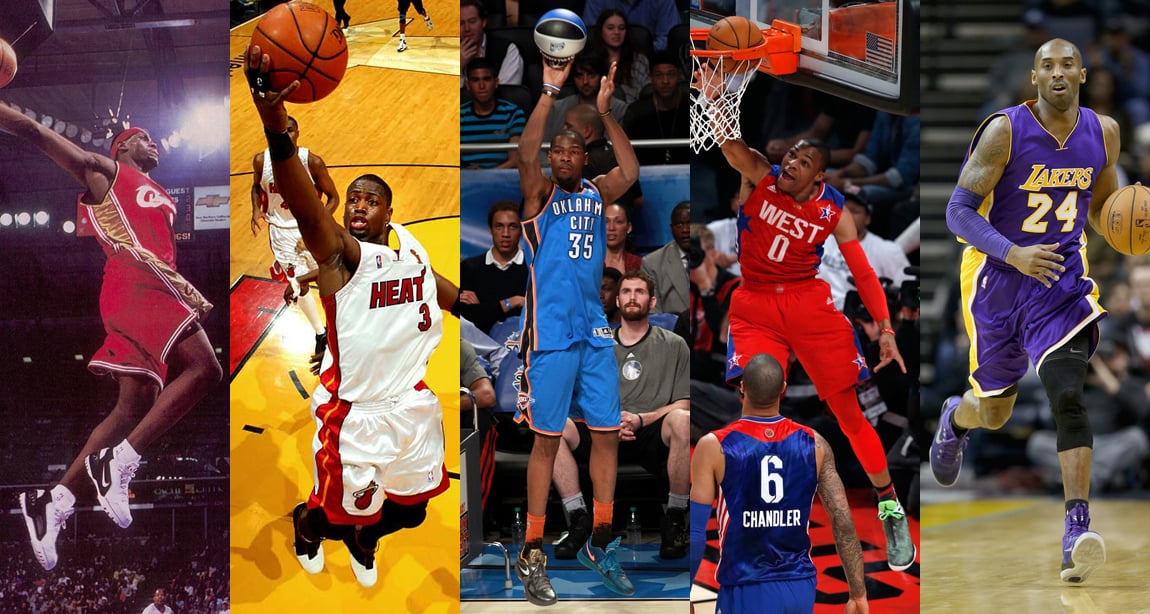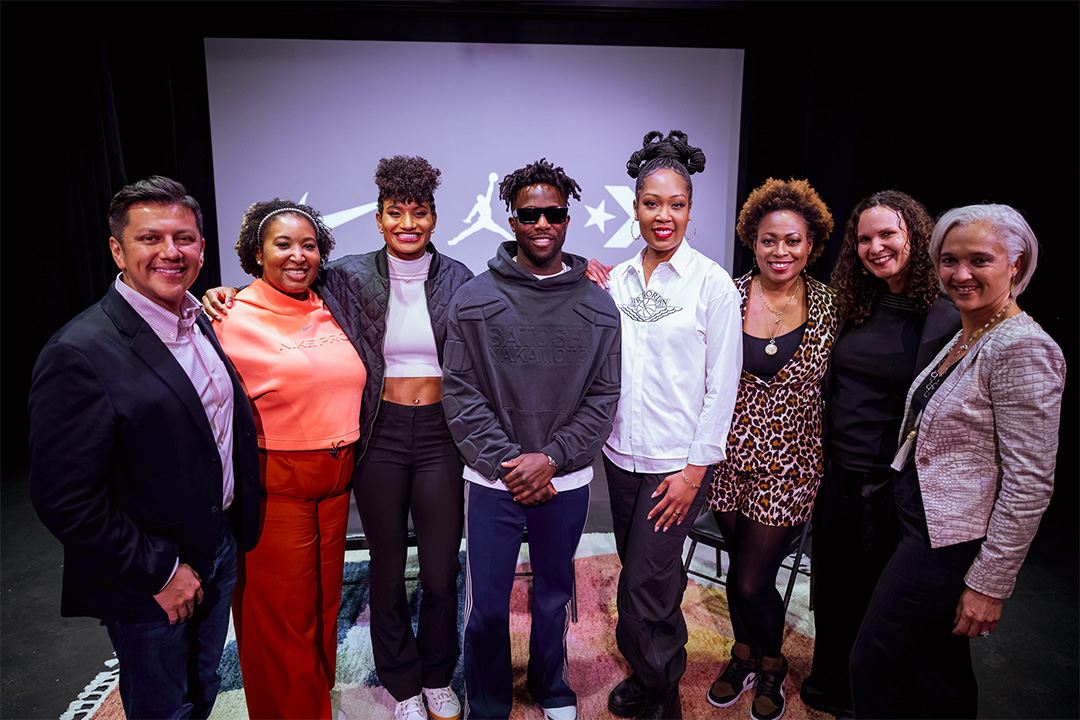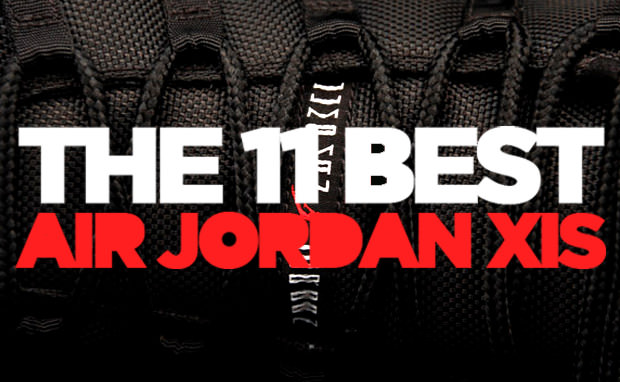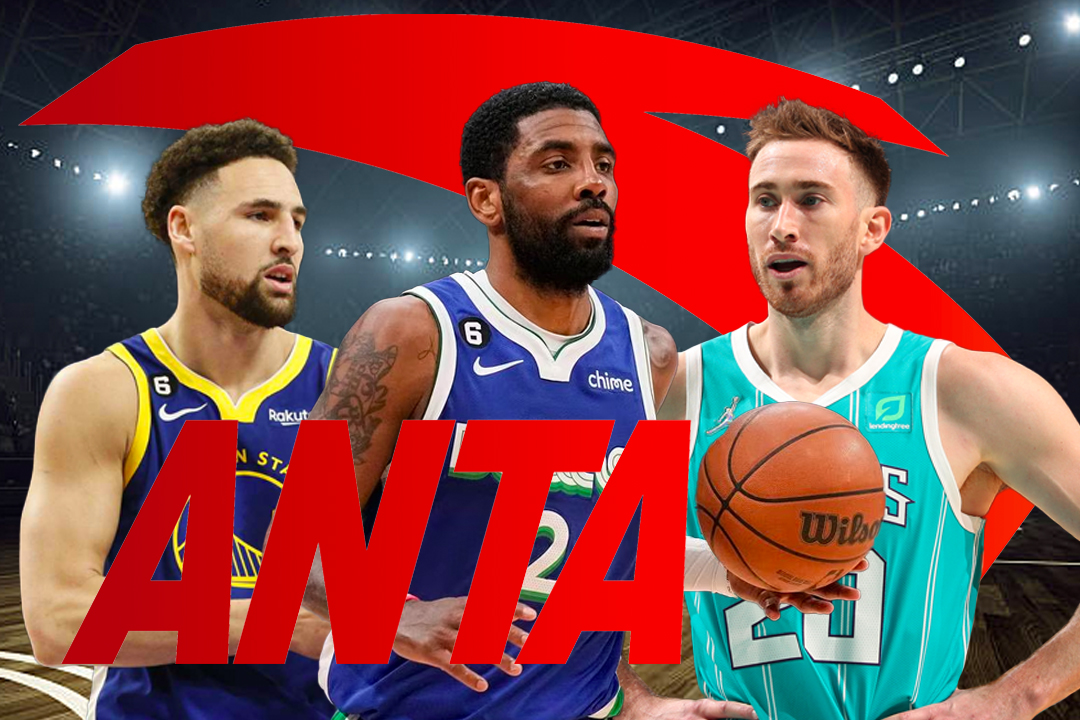This post may contain affiliate links. Please read our disclosure policy.
The NBA Finals are upon us and the ‘look good, play good’ mantra should make for some of the best PEs and new colorways on this season’s strongest silos. Over the past 15 years, the performance basketball landscape has been shaped by innovation and star power, with select models hitting the mark for both critical and commercial success. Paying attention to the models that made the biggest waves during their respective years, we take a look at the hardwood sneakers that defined the 2000s thus far.
2000: AND1 Tai Chi & Nike Shox BB4
From a sneaker standpoint, 2000 was Vince Carter’s year. Between Michael Jordan’s second retirement and the lockout season, NBA star power and morale was lacking. Enter Vinsanity and the infamous Dunk Contest. Rewriting the laws of physics and flight, the sophomore standout took home the title in jaw dropping fashion in the AND1 Tai Chi. Smart design, streetball steeze, and VC’s flight made the Tai Chi an instant classic that’s still recognizable.
If owning ASW wasn’t enough, VC took his high wire act overseas for the summer. Making the move to Nike, Vince would become the face and feet of the new Shox franchise in the Sydney Olympic Games. The Nike Shox BB4 would become synonymous with the ‘Dunk of Death’ against France and become the shoe of the sports spectacular. Coming in to the 2000-01 season, Vince would rock the Shox in T. Dot while top performers in the amateur ranks would unofficially endorse team bank colorways.
2001: Reebok Answer IV & Nike Air Jet Flight
Photo by Nathaniel S. Butler/NBAE via Getty Images
In 2001, saying Allen Iverson was the best player in pro basketball wasn’t a bold statement, it was a fact. After taking the Sixers to the Finals and winning the NBA MVP Award, Allen Iverson was a household name and his signature line was the biggest in basketball. The Reebok Answer 4 saw his biggest commercial hit this side of the Question, getting love on court and at retail in mid, low and slip-on form.
While Allen Iverson was at the top of the game from a star power standpoint, another footwear movement was taking place. The Nike Air Jet Flight was a cult classic that was ahead of its time. Built for the smartest and speediest of guards, the Jet Flight relied on a sock-like fit, low top cut, and lightweight build. Years later, Kobe Bryant would get the credit for making low top basketball shoes en vogue in the NBA. Though this is true, the Jet Flight was well regarded by perimeter players in the pros and among the preps long before.
2002: Air Jordan 17 & adidas TMAC II
Michael Jordan was back in basketball. New team and new shoes, the Air Jordan 17 marked a new look for the industry and Jordan Brand. The $200 price-point was enough to own the conversation, moving the Air Jordan franchise from sport innovation to basketball luxury. Mid and low versions were successful and anticipated upon launches.
On the other end of the two-guard spectrum, Tracy McGrady was fastly rising to fame as the game’s best scorer. His adidas signature line proved more popular than Kobe’s before him and every endorser after, embodying the smooth style that made him a fan favorite. The adidas TMAC II improved on the design and fanfare of the original, getting endorsement from a teenage LeBron and translating well to low top form.
2003: Nike Air Zoom Flight 2k3 & Nike Air Zoom Generation
Before Nike made LeBron James the $90 Million man, they made him a gift in the form of the Nike Air Zoom Flight 2k3. While the shoe doesn’t ring off in collector circles, the model is championed by hoopers and fans of design. Its sleek styling was just as much focused on function, resulting in a lightweight look and feel. Gary Payton and Jason Kidd were among the many NBA endorsers.
Nike’s interest in LeBron James would come to fruition with the Nike Air Zoom Generation. By today’s standards, the shoe was not a smash hit upon unveiling. Never the less, it is apparent that the shoe will be the most memorable basketball sneaker of 2003. The shoe still gets brought out by Kicks On Court favorites and is guaranteed to have retro reign.
2004: Nike Air Zoom Huarache 2k4 & Nike Air Force Operate
For the second straight year, Nike dominated the hardwood. With the streetball craze slowly fading away, Nike looked to the past and future in seemingly opposite manners on the Air Zoom Huarache 2k4 and Air Force Operate. While the Huarche 2k4 was extremely progressive at the time, its ethos were based on the brand’s best basketball shoes from the last two decades. Conversely, the Air Force Operate derived directly from the Barkley line. Retro attributes would influence performance basketball models for years to come, while the lower cut build seen on the Amar’e-endorsed Operate would take well to the hybrid post players that depict today’s game.
2005: Nike Air Zoom Huarache 2k5 & Air Jordan XX
The Nike Air Zoom Huarache 2k5 followed in the footsteps of its innovative predecessor, proving that the OG was no fluke. Kobe Bryant continued to wear the franchise on foot with the model even crossing over to the baseball diamond. From a performance standpoint, the Huarache 2k5 is still held at a high regard by basketball players.
Post-retirement Air Jordans have proved tough to move in new fashion, but as a general rule, the weirder they went the better they did. The Air Jordan XX was the perfect example of this, offsetting odd and innovative design with an ultra-nostalgic ad campaign. Telling the tale of MJ’s legacy through Laser etching and the voice of Mars Blackmon, the AJXX paid homage but played in the future.
2006: Starbury 1 & Converse Wade
Were the mid-2000s the dark days of basketball footwear? Well, yes. Fans were still warming up to the signature styles of LeBron and Melo while MJ was officially retired. The Vince Carter line had ended and team shoes had taken off. Oddly enough, the Starbury 1 and Converse Wade stand out as the biggest basketball shoes of 2006. A $15 price point saw the Starburys everywhere, while Flash’s kicks found Converse basketball back on the big stage and back in stores.
2007: Nike Zoom BB1 & Nike Zoom LeBron IV
By 2007, Shox and team shoes were beginning to overstay their welcome. The Nike Air Zoom BB won over the NBA’s best backcourts thanks to superior performance and PE colorways. Its sequel scored well a year later and received wear in the college game.
Though the biggest push in 2007 was for the Air Force 25, the Nike Zoom LeBron IV gets the nod for its innovation and colorways. LeBron had more than arrived in the NBA and his tank-like footwear was starting to see some fanfare. A Foamposite upper was enough to get ekins excited, while limited colorways added a new energy to the performance basketball sector.
2008: Nike Hyperdunk & Nike Zoom Sharkley
Nike used the 2008 Olympics as the launching pad for its biggest basketball shoe in years, the Nike Hyperdunk. While worldwide endorsement and an awesome viral marketing campaign made them buzzworthy, futuristic design and playability made them a hit. Hoopers of all positions took to the Hyperdunk then and still do today.
Left photo by Jonathan Ferrey/Getty Images via Zimbio & right photo by Gregory Shamus/Getty Images via Zimbio
The Nike Zoom Sharkley was everything the Hyperdunk wasn’t. Dated in design and built for the rigors of the outdoor game, the shoe was more celebrated in a performance sense than any fused-retro before or after. Guards were getting in on the fun of the Barkley x Rodman mashup, with iD options and pro-level PEs carrying the silo into the next season.
2009: Nike Air Max LeBron VII & Nike Zoom Kobe IV
Flywire made the Nike Air Max LeBron VII look fast on court, but a patent leather mudguard and Air Max support made them undeniable off court. The shoe served as the breakout model of the LeBron line and ranked reasonably well in regard to performance. While NBA endorsement may have not been as widespread as other models of note, the shoe played a prominent part in the re-popularization of the signature shoe.
Left photo by Chris McGrath/Getty Images via Zimbio & right photo by Stephen Dunn/Getty Images via Zimbio
LeBron’s style points weren’t enough to own the conversation. The Nike Kobe IV was radical to most, looking like a soccer shoe upon first glance. Its low top look was considered a risk for the demands and demeanor associated with a basketball shoe, but its Black Mamba endorsement was enough to intrigue wearers. An injury free season and title take home would hush all talks of how tall a basketball shoe should be.
2010: Nike Kobe V & Nike Zoom Hyperfuse
2010 would see NBA peers jumping on the Black Mamba bandwagon. The Nike Kobe V was a performance smash, improving upon the flaws of its predecessor. Kobe would wear them en route to his second straight ring while teammates and opponents would lace up the low top sig.
Going global, the Nike Zoom Hyperfuse drew from China’s outdoor game and outfitted international stars in the FIBA tournament. Rajon Rondo would rock this model during a breakout playoff run, while fans would have to wait until the fall to score this shoe. Performance was approved by wearers and innovation was evident.
2011: adidas Crazy Light & Nike Zoom KD IV
In 2011 adidas needed a hit — or more so a change. T-Mac was in his twilight, the ‘Believe in 5’ roster was past prime and Bounce cushioning held no weight. Enter the adidas Crazy Light. Slashing scales and slashing the competition, adidas aimed to make being light the catalyst for selling kicks rather than signature star power or heavy cushioning.
Left photo by Ronald Martinez/Getty Images via Zimbio & right photo by Jamie Squire/Getty Images via Zimbio
The Nike Zoom KD IV is the Durant line’s Air Jordan 3. Striking in design and capable on court, the strapped signature took KDs to another level, outperforming previous models and beating big bros LeBron and Kobe in popularity that season. A crazy crop of colorways kept coming in 2012, seeing everything from the “Galaxy” All-Star edition to N7 to “Year of the Dragon.” While people certainly played ball in these, this was the first KD with casual crossover that could compete with the best of them.
2012: Nike LeBron X & Under Armour Micro G Juke
Business was already booming for the LeBron line, and the X caught King James on the biggest upward wave of his whole career. Coming off his first championship and another Olympic gold medal, the Nike LeBron X was big and bad, but backed by the superstar that was once again in good graces. Visible Zoom Max cushioning was a bouncy as it got, only to be upped in ante by the impressive though not super successful Nike+ technology and Sport Pack. The LeBron X definitely felt like the future when it released and will certainly see rich retro life down the road.
What would happen if a sportswear brand focused strictly on performance, ignoring the retro wave or casual cool points? That brand is Under Armour and it was only a matter of time until they broke into the basketball market. While signature shoes like the Black Ice for Brandon Jennings and the Curry 1 now for Steph Curry would make more of a splash, the un-endorsed (though sported by Kemba Walker) Under Armour Micro G Juke proved to be early insight as to what the Shield was capable of on the hardwood. A cozy collar, soft cushioning and sleek look made these more modern than previous designs, scoring well on court just the same.
2013: Air Jordan XX8 & Nike Kobe 8
Can we get much higher? In 2013, the answer would’ve easily been ‘yes’ as the entire market was chasing Kobe and leaning towards lows. For the first time since the XX, Jordan Brand took a real risk on their signature series with the Air Jordan XX8. A super-high Scholler Mesh sleeve saw a fashion forward silo aptly endorsed on-court by Russell Westbrook. While aesthetics would make the AJ XX8 a trending topic, it was truly the Flight Plate technology that took the model over the top. Making the already awesome Zoom Air even better, Jordan Brand revamped playable attributes rather than relying on nostalgia for their best basketball shoe in years.
After experimenting with modular cushioning on the innovative but slightly stiff Kobe 7, Eric Avar and company proved less was more on the Nike Kobe 8. Lower and lighter than any previous pair, the Black Mamba’s eighth installment ditched stiff synthetics and Zoom Air cushioning for an Engineered Mesh upper and drop-in Lunarlon insole. The results were celebrated as the Kobe 8 saw Jelly Bean’s signature line return to the top of the performance totem pole.
2014: Nike Kobe 9 Elite & Nike Zoom HyperRev
Following the sleek success of the Kobe 8, the Black Mamba’s signature line certainly didn’t need a hit, but how much more minimal could it get? Rewriting the formula and mixing up the medicine after Kobe’s achilles injury, the Nike Kobe 9 Elite saw the first high top in Kobe’s otherwise mid to low line. Introducing Flyknit to the hardwood, the Kobe 9 Elite was a sharp departure from his previous models, bringing a maximalist aesthetic only Avar could pull off. Though still celebrated in the performance department, the Kobe 9 Elite really won points off the court for its bold look and tight allocations.
So set on star power and innovations (not that there’s anything wrong with that), Nike went back to basics in 2014 with the no nonsense Nike Zoom HyperRev. Built for ball and nothing else, the Kyrie co-signed sneaker was progressive without trying too hard to be pretty. More exciting than recent Hyperdunks or Hyperfuses, the HyperRev was edgy, aggressive and unexpected. For the first time in years, Nike had a noticeable basketball silo with no name stamped on the shoe box.
Additional images via Zimbio, SI Kids, Auto Fiends & Merlin




